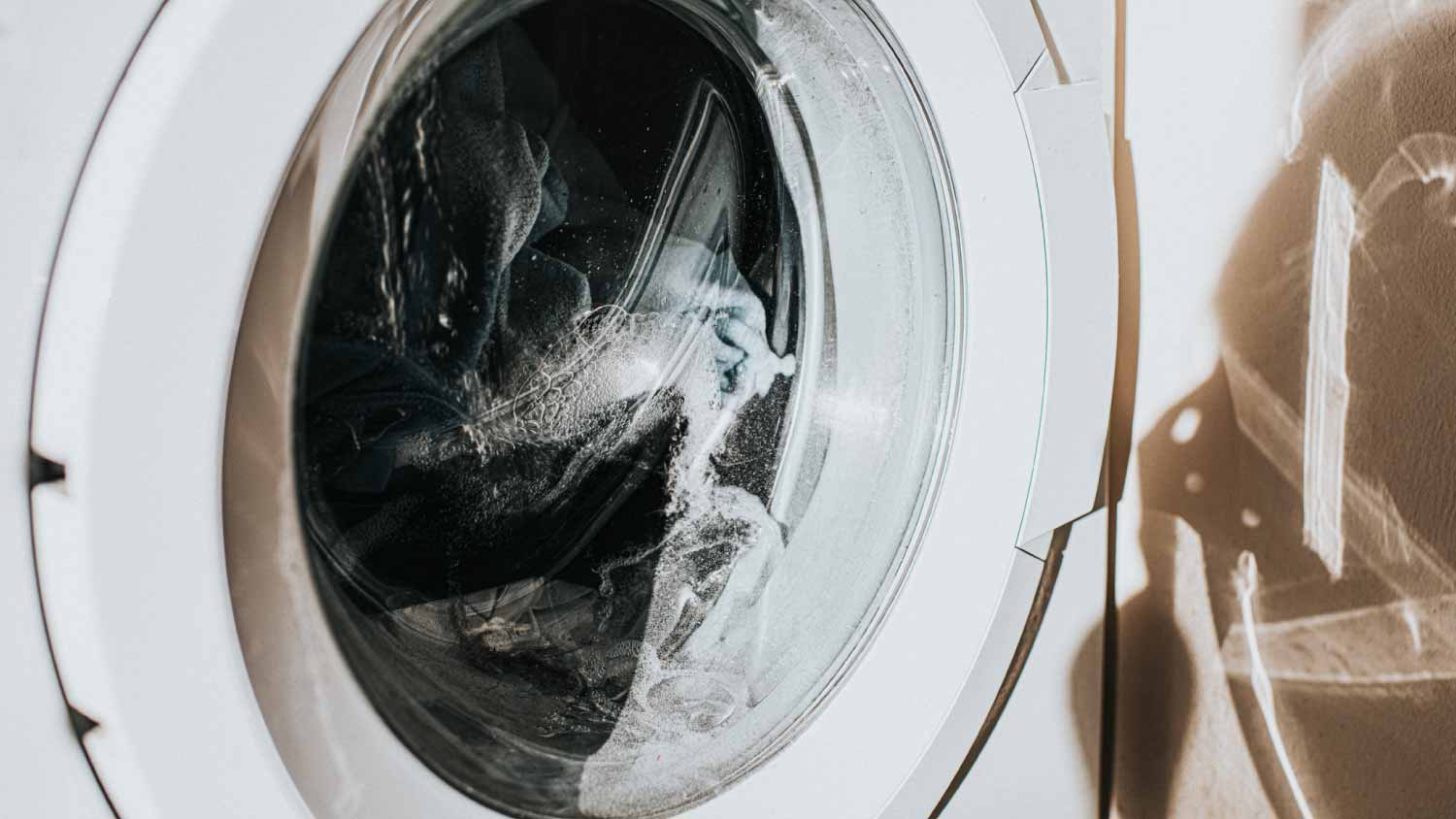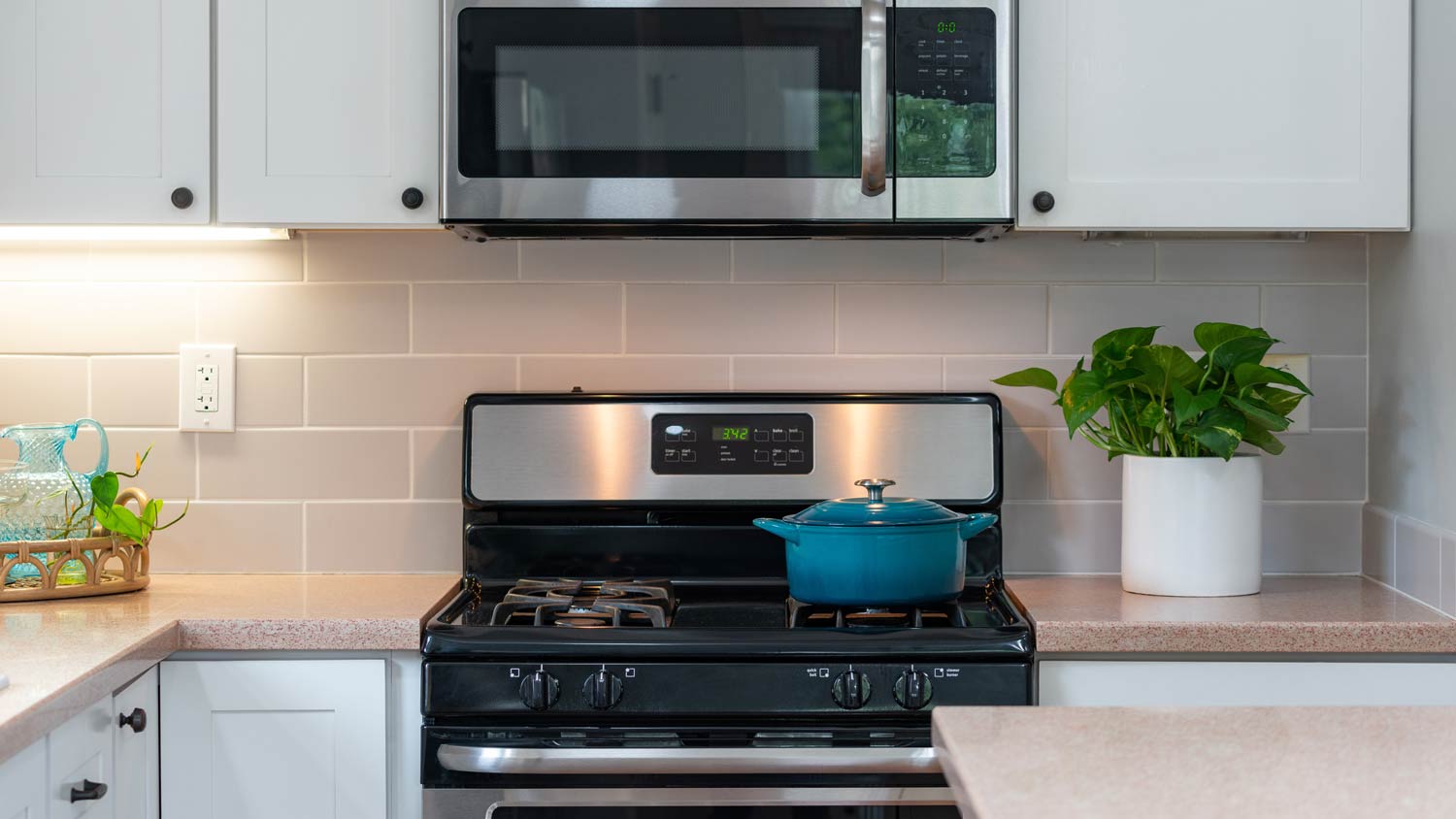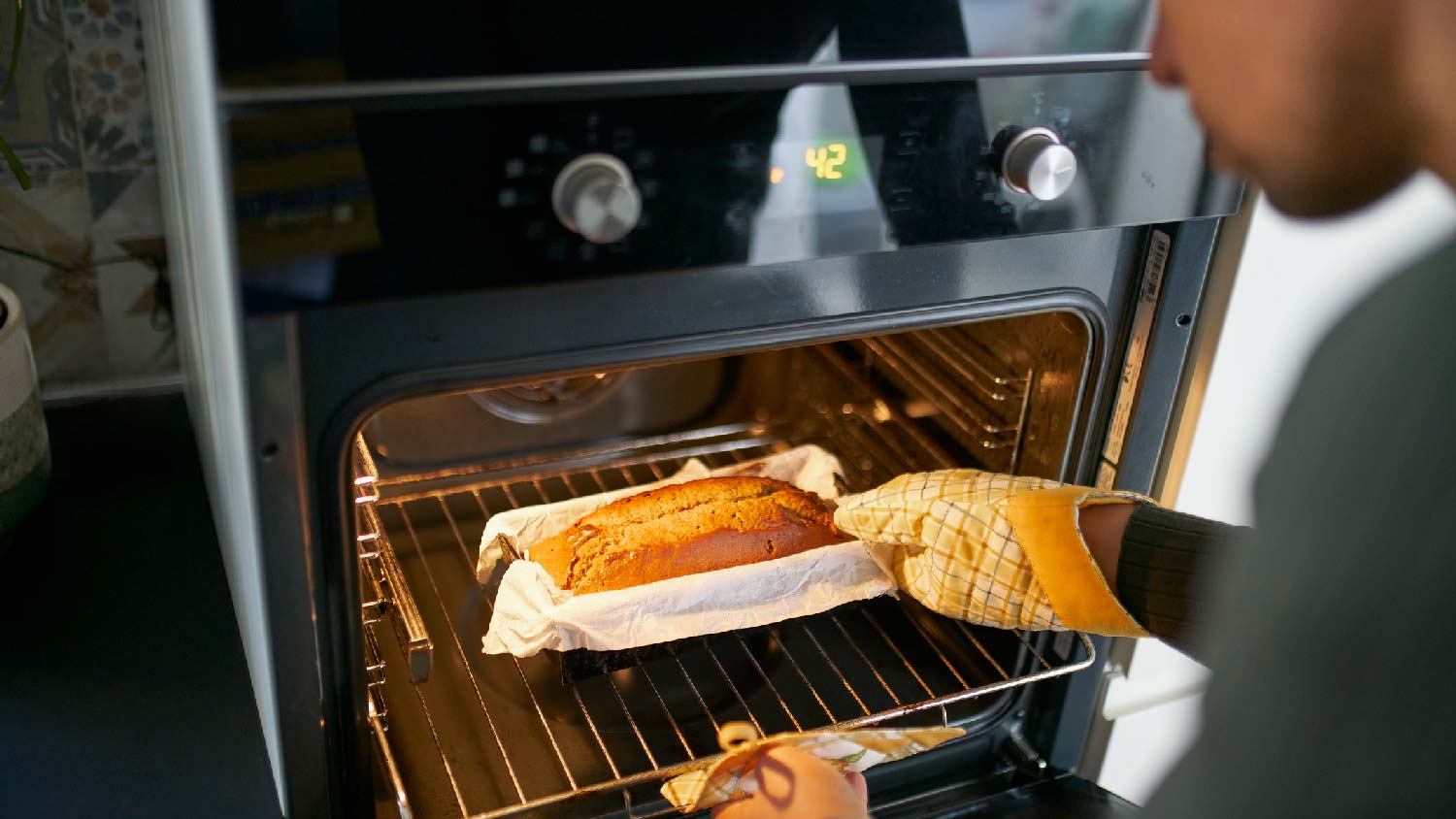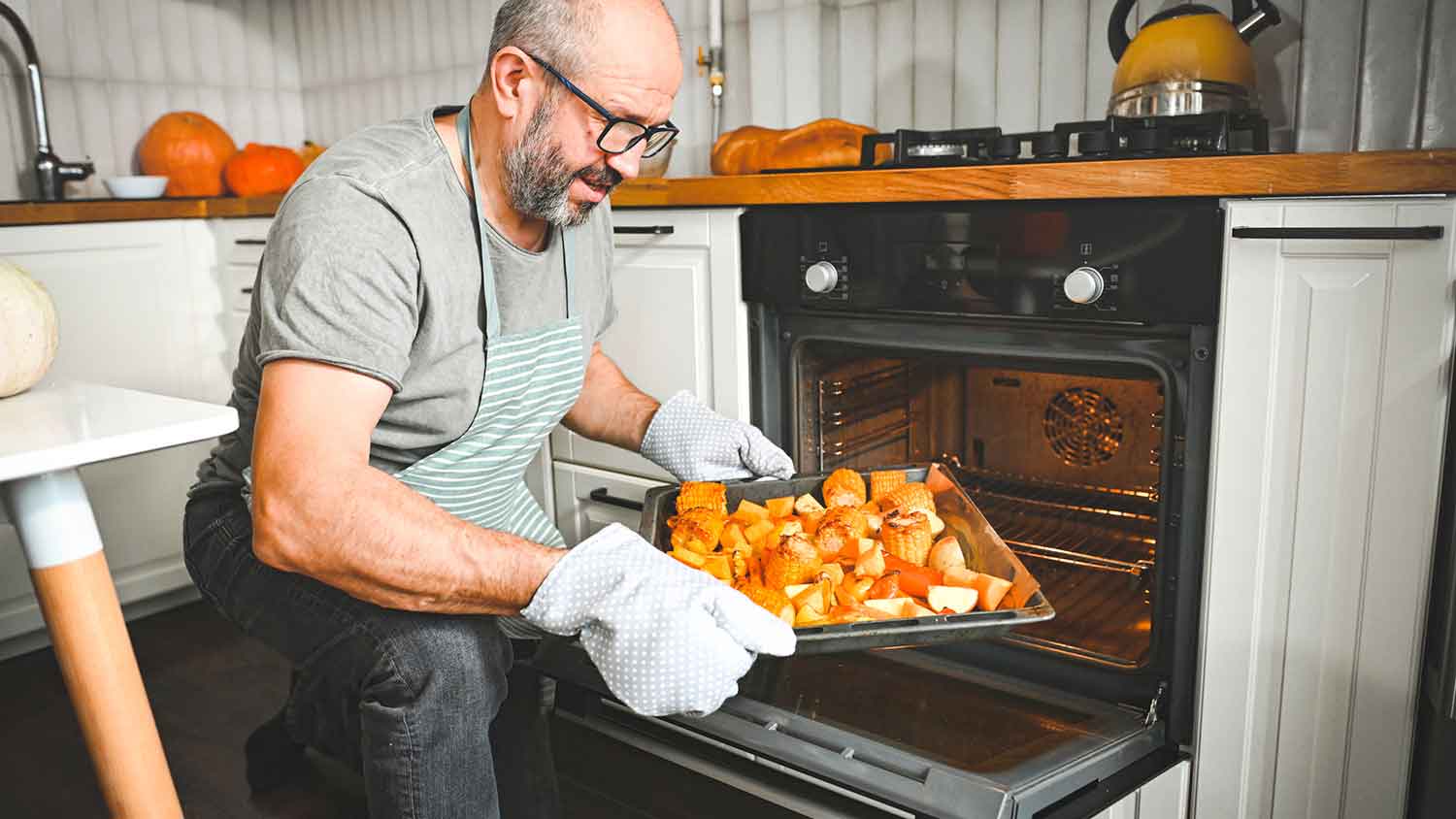Parts of an Oven: Complete Guide
Bake and broil, learn what parts are in your oven


The basic parts of an oven are oven racks, broil element, and bake element.
Convection ovens have a convection fan to move hot air around.
A wall oven can cost from $800 to $3,200.
A range oven costs $600 to $1,300 on average.
What are the different parts of an oven? It’s helpful to know how one of the most common appliances in the kitchen works and what purpose each component serves. That way, you can troubleshoot your oven when something goes wrong and handle minor repairs, saving money for larger upgrades and replacements.
What Are the Different Parts of an Oven?
Oven racks, bake, and broil elements create a standard oven cavity and ensure the core baking functionalities. Most ovens also have an oven door, a hidden bake tray, a vent, and a light assembly. Gas ovens also have an igniter. Newer oven models have additional parts. Convection ovens have a convection fan module to help spread the heat around, whereas a standard oven doesn’t have a broil element, instead, it has a small water tank and a built-in boiler to create steam.

Broil Element

Broil elements provide high temperatures between 500 and 550°F. They are usually located at the top of the oven cavity and are turned on by hitting the broiling oven on the control panel. Some ovens have a high broil and a low broil, while others only have one temperature.
Broil elements are often useful for browning to create a crispy surface or a slightly burnt top layer. They can be used to cook baked pasta, pizzas, casseroles, or meat with skin. It also aids in creating a caramel layer on barbecue items or baked goods.
Bake Element

The bake element is the most fundamental component in an oven. Depending on your oven’s make and model, it may be located at the bottom, at the top and the bottom, or in the far back of the oven cavity.
If the bake element is malfunctioning, your oven will either overheat or fail to reach the desired temperature at all. Either way, do not attempt to replace the bake element yourself. Call a licensed professional to take a look.
Hidden Bake Tray
The hidden bake tray prevents spills and drips from damaging the bake element. It’s usually located at the bottom of the oven cavity but above the bake element. If you notice visible damage, such as holes or cracks on your hidden bake tray, it will need to be replaced. Thankfully, you can often find replacement trays on your oven’s manufacturer’s website.
Oven Rack

Oven racks are often made with stainless steel, enameled metal, aluminum, or even cast iron. Most oven racks cost around $25, but cast iron ones may be slightly more expensive. The oven racks hold your baking trays, dutch ovens, cookie sheets, etc., and are essential to cooking with the oven.
You should replace your oven racks once they show signs of damage or severe wear and tear. Stubborn stains, rusting, bent or broken metal are all indicators that it is time for some new racks. To make sure you get the correct size, refer to the specifications included in your owner’s manual, or simply take your old rack with you to a hardware store.
Light Bulb & Assembly

Most ovens today come with an oven light consisting of a light bulb and its container hardware. It’s generally easy to replace the light bulb. Some ovens use a special 40 W halogen bulb, so be sure to refer to the owner’s manual for the correct wattage.
Vent Tube
The oven vent tube is usually located at the top of the oven cavity and is designed to let heat and moisture escape. Routine maintenance is essential to keeping the vent working because food debris and crumbs from previous cooking slowly accumulate and can eventually block the airflow. A clogged vent tube can lead to uneven cooking, slower heating speed, and higher energy use.
Also, an oven vent is not the same as the range vent hood.
Convection Fan

Convection ovens have one additional component, the convection fan. Unlike conventional ovens, convection ovens use the convection fan to circulate hot air heated by a bottom element throughout the cavity. This allows better heat distribution, cooking food more evenly and swiftly.
The convection fan is usually located on the back of the convection oven. It consists of two components: the convection baffle that encloses the fan, and the fan blade that creates airflow and helps move heat around.
Gas Oven Igniter

A gas oven igniter lights up the oven’s heating burner and is typically found near the burner tube toward the back of the oven. A functioning igniter should turn orange when the oven is turned on. If your gas oven isn’t heating, check the igniter for signs of malfunctioning, including buildup, discoloration, or damage. If it’s not working, hIre a licensed professional to replace the ignitor.
Warming Drawer

Some ovens have a warming drawer located under the baking cavity. This drawer is useful for rising dough or keeping food warm, and it can also be used as a slow cooker.
Oven Door

Finally, the oven door is the front piece that opens up. Most oven doors have a glass center, allowing you to check on the food without letting out any hot air. Oven doors are easy to maintain, as surface cleaning is all it needs.
How to Maintain Different Parts of an Oven?
Gas ovens should be serviced once a year. Electric and convection ovens only need to be inspected if you believe something isn’t working. Meanwhile, you should deep clean your oven every three months. Run the self-cleaning cycle, or use the easy oven-cleaning spray cans.
Clean your oven racks regularly, especially if you notice grease building up. Oven racks can be cleaned easily using regular dish soap in your sink. This will significantly increase your rack’s life span. Similarly, slide out your warming drawer after each use and wipe it clean.
If your oven door doesn’t shut fully, check its hinge, seal, and gaskets. Give it a good cleaning and greasing, tighten the parts, and replace it with a new seal. If none of the simple fixes work, call a professional to find out what’s not working.
Repair vs. Replace an Oven
Sometimes, it makes more sense to replace instead of repair the oven. Most range ovens last about 13 years. Therefore, it may not be worth it to repair an oven near the end of its life span.
If you are replacing an old oven, consider investing in an upgrade. For example, a wall oven provides great aesthetics, utilizes the space effectively, and sometimes has more robust functionalities. Wall oven installation costs $800 to $3,200 on average, but can go up to $5,000 for more advanced models.
Instead of a traditional oven, you can also consider adding a steam oven. It is a great option for heating up food evenly and effectively and works faster than a conventional oven. If you choose to stay with a range oven, consider upgrading to an induction range, which is 30% more energy efficient than a stove range.
You should always hire a licensed and insured appliance professional to install your new oven and make sure they have decent warranty coverage.





- Appliance Repair Companies
- Washing Machine Repair
- Dryer Repair
- Refrigerator Repair
- Dishwasher Repair
- Oven Repair
- Wood & Pellet Stove Repair
- Freezer Repair Services
- Wood Stove Services
- Gas Stove Repair
- Emergency Appliance Repair Companies
- Ice Maker Repair
- Gas Appliance Repair
- GE Appliance Repair
- GE Refrigerator Repair
- GE Dryer Repair
- GE Dishwasher Repair
- GE Washing Machine Repair
- Samsung Appliance Repair
- Samsung Refrigerator Repair
- Samsung Dryer Repair
- Samsung Washer Repair
- Samsung Dishwasher Repair
- Samsung Oven Repair
- Whirlpool Repair
- Whirlpool Refrigerator Repair
- Whirlpool Washer Repair
- Whirlpool Dryer Repair
- Whirlpool Oven Repair
- Maytag Appliance Repair
- Maytag Refrigerator Repair
- Maytag Washer Repair
- Maytag Dryer Repair
- Maytag Dishwasher Repair
- Kitchenaid Appliance Repair
- Kitchenaid Oven Repair
- Kitchenaid Refrigerator Repair
- Kenmore Appliance Repair
- Kenmore Dishwasher Repair
- Kenmore Washer Repair
- Kenmore Dryer Repair
- LG Refrigerator Repair
- Bosch Appliance Repair
- Kenmore Refrigerator Repair
- LG Appliance Repair Services
- GE Microwave Repair
- Electrolux Appliance Repair
- Electrolux Washer Repair
- Kitchenaid Dishwasher Repair Services
- Wood Stove Inspection
- Dishwasher Installation
- Trash Compactor Repair










